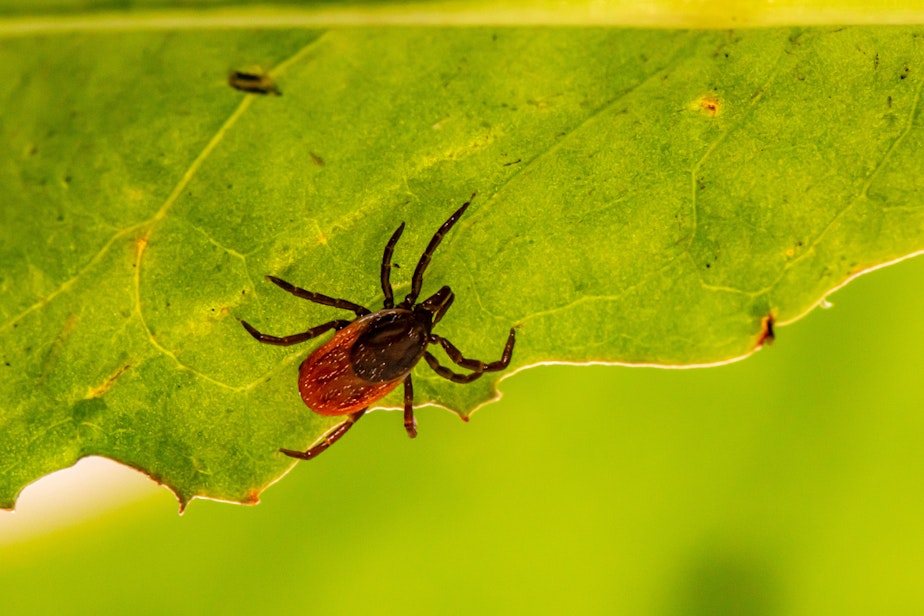Is climate change bringing more disease-carrying bugs to the PNW?

We've got about a month and a half of summer left, so still plenty of time to get outdoors and enjoy the warm weather.
Pack the bug spray, though. They're plentiful — and plenty hungry.
Some are carrying some nasty bugs of their own, including bugs that are rare in the Pacific Northwest.
"With climate change, we are expecting to see both mosquitoes and ticks, and it will impact their distribution," said Liz Dykstra, a public health entomologist with the Washington State Department of Health's Zoonotic Disease Program.
"We could see tick distribution expand in some areas," she said. "So, that is something that monitoring and ongoing surveillance is important to help track."
Washingtonians are likely seeing fewer ticks right now — tick season is in the spring and early summer — but the state is still keeping its eye on several cases of tick-borne illness.
In fact, the state just recorded its second-ever in-state human case of a rare tick-borne disease called anaplasmosis. The illness causes fever, muscle aches, and other symptoms that range in severity from mild to life-threatening. Severe or life-threatening cases are rare, though, according to the Centers for Disease Control and Prevention.
Sponsored
People may also develop meat allergies after getting bitten by ticks. Some such cases have been found here in Washington state. Dykstra said those cases originated in the eastern part of the country, though, home to lone star ticks, which are most associated with meat allergies.
"However, we did have a case that came up a year ago that was here in Washington state, and we think it was probably associated with the western black-legged tick, which we do have here here in the state," Dykstra said. "We're working with CDC and investigating that case now."
More prevalent right now are the mosquitos.
Washingtonians may notice more of the bloodsuckers around this year. That's thanks to a larger snowpack that accumulated this past winter, Dystra said. Now that it's melted, there's plenty of water for mosquitos to breed in.
"Another factor is that we have subspecies that we refer to as floodwaters species," she explained. "And what they do is they lay their eggs right above the waterline. You could have several years where multiple generations of mosquitoes lay their eggs right above that waterline. And those eggs are not covered, and they can stay viable for many years."
Sponsored
(Ick.)
Dystra and her fellow entomologists are keeping their eyes on those mosquito numbers, too, because they carry West Nile virus and malaria. Some mosquito pools in Benton County have tested positive for West Nile virus this year, and cases of malaria are popping up elsewhere in the country.
"The interesting thing about that is it's a form of malaria, Plasmodium vivax, that can actually sequester itself in the liver and stay there for years and years and come back and make the person sick again, years after they were originally infected," Dykstra said. "And we do have two species of Anopheles mosquitoes here in North America that can transmit that form of malaria."
So, keep the bug spray handy, wear protective clothing and look out for the creepy crawlies.





